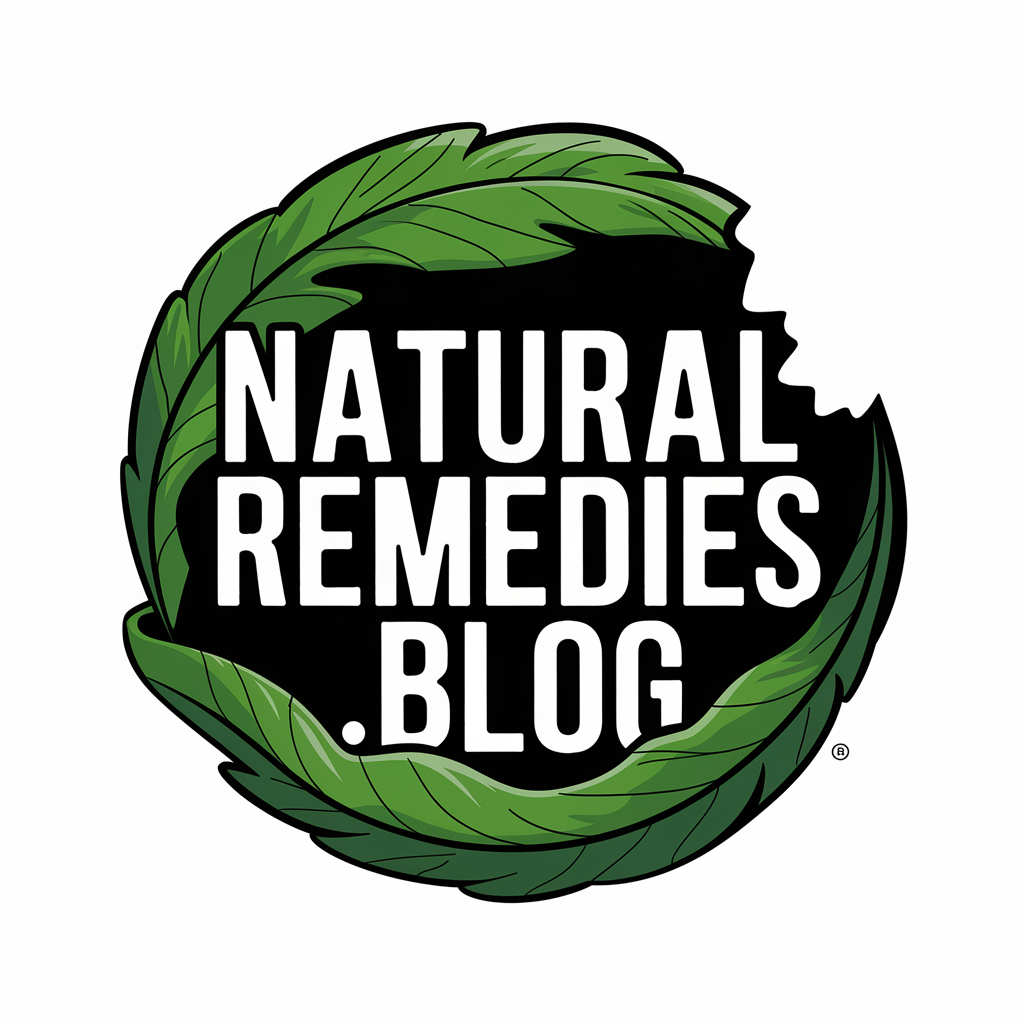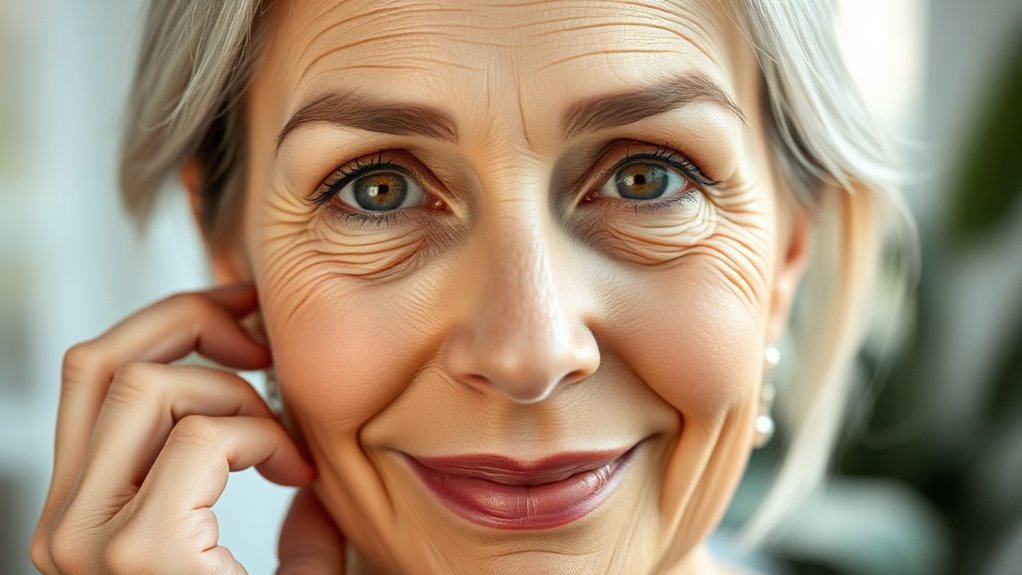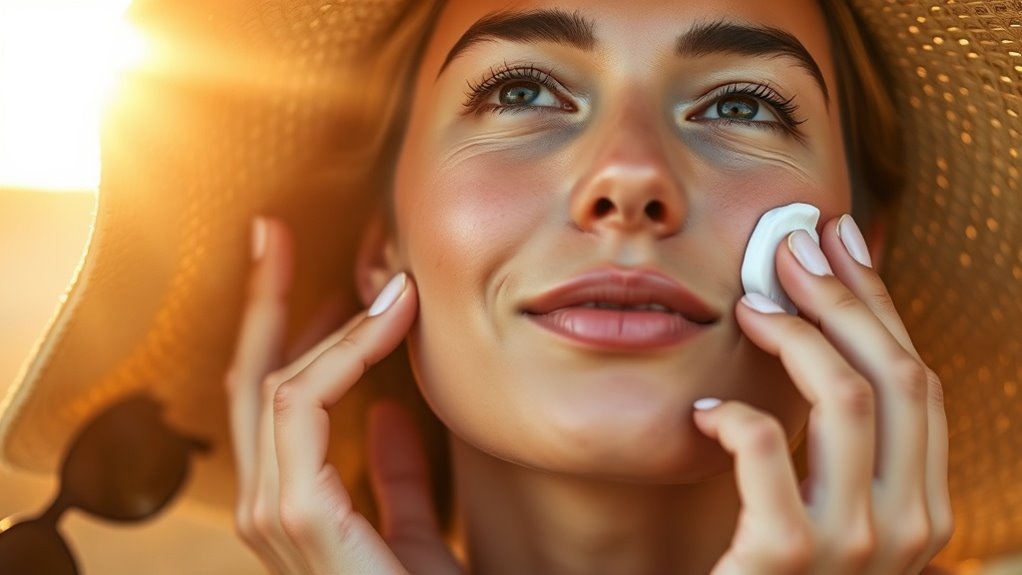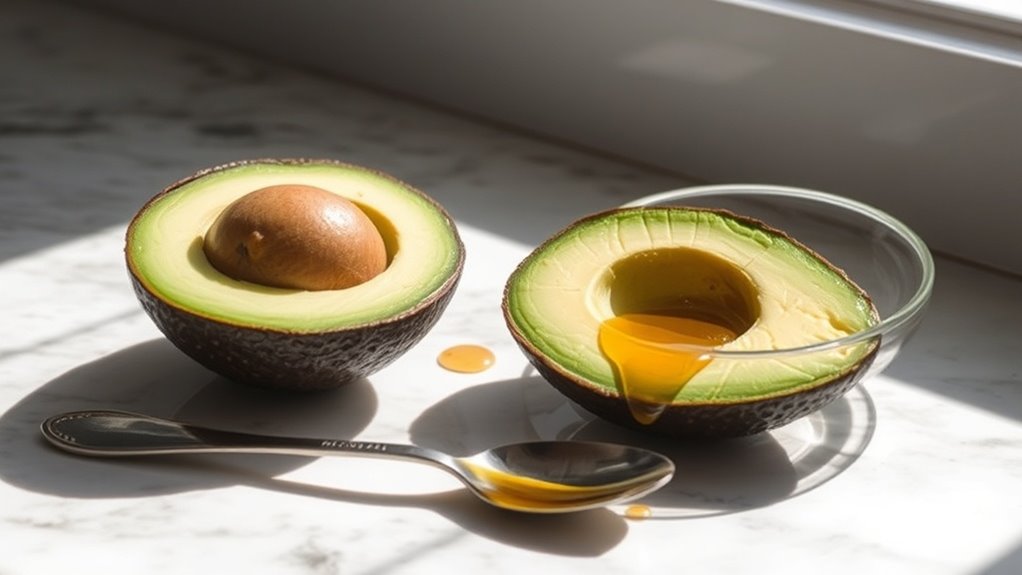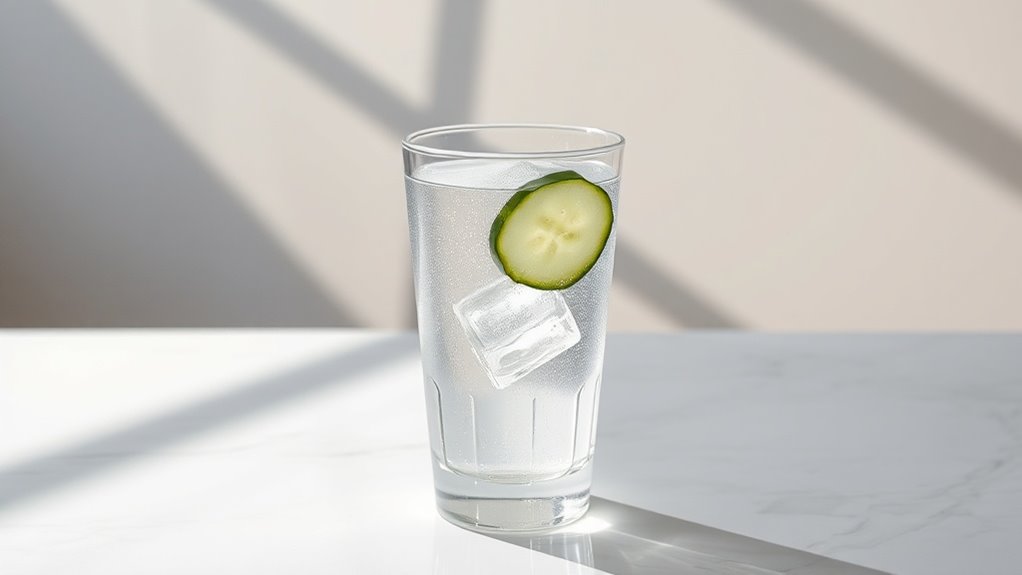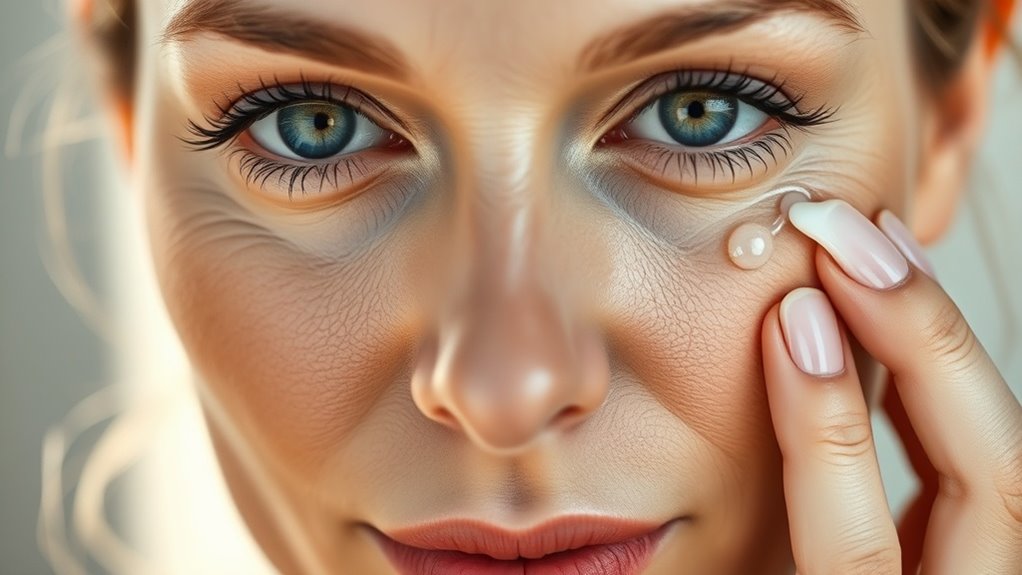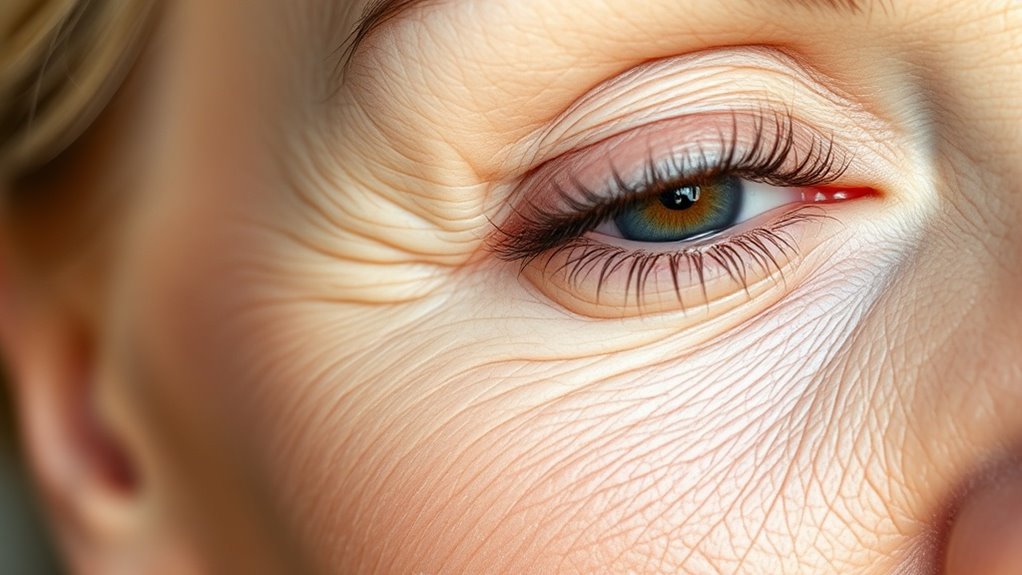How to Reduce Wrinkles on Face With 7 Anti-Aging Secrets.
Wondering why wrinkles keep appearing despite your best skincare efforts? Wrinkles form when your skin loses collagen and elasticity over time, accelerated by sun exposure, repeated facial expressions, and lifestyle factors like smoking or poor sleep. This happens to everyone—it’s a natural part of aging that typically becomes noticeable in your 30s and progresses from there. The good news? Clinical research shows you can significantly slow down and even reverse visible signs of aging with the right combination of proven strategies. You’ll discover seven evidence-based methods that work at the cellular level to rebuild skin structure, protect against further damage, and restore a smoother, more youthful appearance. Let’s break down what’s really happening beneath your skin’s surface.
Protect Your Skin From Sun Damage Daily
Because ultraviolet radiation accounts for approximately 80% of visible facial aging, implementing daily photoprotection constitutes the most critical intervention in wrinkle prevention. You’ll need broad-spectrum sunscreen with minimum SPF 30, applied 15 minutes before sun exposure and reapplied every two hours. Select formulations containing zinc oxide or titanium dioxide for optimal UVA protection.
You should incorporate these wrinkle remedies face protocols into your routine: wear wide-brimmed hats providing facial coverage, seek shade during peak UV hours (10 AM-4 PM), and utilize UV-protective clothing with UPF ratings above 50. Apply sunscreen to often-neglected areas including your neck, décolletage, and hands. Consider mineral-based formulations if you have sensitive skin, as they’re less likely to cause irritation while maintaining photoprotective efficacy. Complement your sun protection with antioxidants to neutralize free radicals generated by environmental damage, which can accelerate the aging process even with proper photoprotection.
Establish a Retinoid-Based Skincare Routine
Retinoids—vitamin A derivatives including tretinoin, adapalene, and retinol—represent the gold-standard topical intervention for wrinkle reduction, with clinical evidence demonstrating improved collagen synthesis, accelerated cellular turnover, and decreased matrix metalloproteinase activity.
Begin with lower concentrations (0.25% tretinoin or 0.3% adapalene) to minimize irritation. Apply a pea-sized amount to cleansed, dry skin three nights weekly, gradually increasing to nightly application over 4-6 weeks. Introduce retinoids after moisturizer initially to buffer potential adverse effects.
You’ll experience retinization—temporary dryness, flaking, and erythema—during the first month. Manage symptoms with ceramide-based moisturizers and temporary frequency reduction. Avoid combining retinoids with benzoyl peroxide, vitamin C, or AHAs/BHAs initially.
Results manifest after 12 weeks of consistent use, with optimal improvement observed at 6-12 months. Prescription-strength tretinoin delivers superior outcomes compared to over-the-counter retinol formulations. Complement your retinoid regimen with antioxidant-rich foods containing vitamins C and E, as botanical compounds can boost collagen production by up to 47% through fibroblast stimulation.
Stay Hydrated Inside and Out
Cutaneous hydration directly influences the appearance of fine lines and wrinkles by maintaining the skin’s structural integrity and barrier function. You’ll need to consume 2-3 liters of water daily to support dermal hydration from within. Simultaneously, apply hyaluronic acid serums containing molecular weights between 50-1000 kDa to bind moisture at multiple skin depths.
Implement occlusive moisturizers containing ceramides and glycerin within three minutes post-cleansing to prevent transepidermal water loss. You should also integrate a humidifier in low-humidity environments to maintain ambient moisture at 40-60%.
Monitor your hydration status through urine color assessment and skin turgor tests. Reduce caffeine and alcohol intake, as both compounds increase diuresis and compromise dermal moisture retention. Consider incorporating niacinamide and peptides into your routine to strengthen the moisture barrier and enhance skin resilience. This multifaceted approach addresses both intrinsic and extrinsic hydration pathways.
Prioritize Quality Sleep for Skin Regeneration
Your sleep patterns directly influence collagen synthesis and cellular repair mechanisms that occur during the circadian rhythm’s restorative phase.
Clinical studies demonstrate that inadequate sleep duration (less than 7-9 hours) accelerates intrinsic aging markers, including fine lines and reduced skin elasticity.
Additionally, your sleep position creates repetitive compression forces against facial tissue, producing permanent expression lines over time.
Switching to a silk or satin pillowcase minimizes friction against delicate facial skin, helping prevent the formation of sleep lines and wrinkles.
Sleep Position Affects Wrinkles
Sleep mechanics directly influence facial aging through mechanical compression and restricted tissue perfusion. When you sleep on your side or stomach, gravitational forces and pillow friction create repetitive compression patterns that form permanent creases over time. These sleep lines typically appear perpendicular to wrinkles caused by facial expressions.
You’ll minimize this damage by adopting supine sleeping position (back-sleeping). This eliminates facial contact with pillows, reducing mechanical stress on delicate skin structures. If back-sleeping isn’t feasible, invest in silk or satin pillowcases that decrease friction coefficient compared to cotton alternatives.
Studies demonstrate that consistent side-sleeping correlates with asymmetric wrinkle patterns—deeper lines develop on the preferred sleeping side. Document your sleep position through time-lapse photography to identify compression zones requiring targeted intervention through positional therapy or specialized orthopedic pillows.
Nighttime Skin Repair Process
During nocturnal hours, skin cells accelerate their regenerative processes at rates two to three times higher than daytime levels. Your body increases collagen synthesis, repairs DNA damage from UV exposure, and enhances cellular turnover while you’re sleeping.
Growth hormone secretion peaks between 11 PM and 2 AM, triggering fibroblast activity that rebuilds dermal matrix proteins.
To optimize this repair cycle, you’ll need seven to nine hours of uninterrupted sleep. Your skin’s permeability increases at night, making this the ideal time to apply retinoids, peptides, and antioxidants. These compounds penetrate deeper into the epidermis when barrier function is naturally compromised.
Sleep deprivation elevates cortisol levels, which degrades existing collagen and accelerates photoaging. Consistent sleep schedules synchronize your circadian rhythm, maximizing these restorative processes.
Optimal Sleep Duration Matters
Research demonstrates that adults who maintain seven to nine hours of sleep nightly show 30% fewer fine lines and improved skin barrier function compared to those sleeping six hours or less. During sleep, your body increases growth hormone secretion, which facilitates collagen synthesis and cellular repair mechanisms essential for dermal integrity.
Sleep deprivation elevates cortisol levels, accelerating collagen degradation and compromising epidermal barrier function. You’ll experience increased transepidermal water loss and decreased skin elasticity when consistently sleeping fewer than seven hours. Clinical studies indicate that chronic sleep restriction reduces skin’s ability to recover from UV damage and environmental stressors by 40%.
Establish consistent sleep-wake cycles to optimize circadian rhythm regulation. This synchronization enhances melatonin production, which provides antioxidant protection against oxidative stress and supports nocturnal skin regeneration processes.
Incorporate Antioxidant-Rich Foods Into Your Diet
Dietary antioxidants neutralize free radicals—unstable molecules that degrade collagen and elastin fibers through oxidative stress. You’ll achieve optimal results by consuming foods high in vitamins C and E, beta-carotene, and polyphenols.
Prioritize these specific food groups: berries (blueberries, strawberries), leafy greens (spinach, kale), nuts (almonds, walnuts), and fatty fish (salmon, mackerel). Vitamin C facilitates collagen synthesis while protecting existing structural proteins. You’ll need 75-90mg daily from citrus fruits, bell peppers, or broccoli.
Include selenium-rich foods like Brazil nuts and eggs to enhance glutathione peroxidase activity—your body’s primary antioxidant enzyme. Green tea provides catechins that reduce UV-induced skin damage.
Consume five servings of colorful produce daily to maintain consistent antioxidant levels. You’ll maximize absorption by pairing fat-soluble vitamins (A, E) with healthy fats during meals. Additionally, omega-3 fatty acids from salmon, mackerel, and walnuts reduce inflammation and maintain skin integrity for enhanced wrinkle prevention.
Practice Facial Exercises and Massage Techniques
While nutritional interventions address wrinkle formation internally, targeted mechanical stimulation provides complementary external benefits. Facial exercises strengthen underlying musculature, improving skin tone and reducing sagging. You’ll perform specific movements targeting the frontalis, orbicularis oculi, and zygomaticus muscles through controlled contractions held for 5-10 seconds.
Implement lymphatic drainage massage using upward, outward strokes with fingertips. Apply gentle pressure along facial meridians to stimulate circulation and promote collagen production. You’ll utilize techniques including effleurage, petrissage, and tapotement for 10-15 minutes daily.
Incorporate facial cupping or gua sha tools to enhance microcirculation and fascia release. These methods increase blood flow to dermal layers, facilitating nutrient delivery and waste removal. Clinical studies demonstrate consistent practice yields measurable improvements in skin elasticity and wrinkle depth reduction. Enhanced oxygen flow through proper breathing techniques during these exercises can further improve facial appearance and accelerate results.
Avoid Smoking and Limit Alcohol Consumption
Tobacco smoke accelerates dermal aging through multiple biochemical pathways that directly compromise skin integrity. When you smoke, you’re depleting oxygen levels, degrading collagen fibers, and generating reactive oxygen species that damage cellular structures. You’ll notice premature wrinkling around your mouth and eyes from repetitive muscle contractions and reduced microcirculation.
Alcohol consumption similarly impairs skin regeneration by inducing systemic dehydration and depleting essential nutrients.
| Substance | Mechanism | Visible Effect | Recovery Time | Action Required |
|---|---|---|---|---|
| Cigarettes | Collagen breakdown | Deep wrinkles | 6-12 months | Complete cessation |
| Alcohol | Dehydration | Dull texture | 2-4 weeks | Limit to 1 drink/day |
| Vaping | Nicotine exposure | Fine lines | 3-6 months | Discontinue use |
You must eliminate tobacco completely and restrict alcohol intake to preserve your skin’s structural matrix.
Frequently Asked Questions
Can Botox or Fillers Be Combined With Natural Anti-Aging Methods?
You can safely combine Botox or dermal fillers with natural anti-aging methods like retinoids, sunscreen, and antioxidants. This integrated approach optimizes results by addressing wrinkles through both neurotoxin/volume restoration and cellular-level skin health improvements simultaneously.
How Long Before Wrinkle Treatments Show Visible Results?
You’ll observe Botox results within 3-7 days, reaching peak effect at 14 days. Dermal fillers show immediate improvement. Topical retinoids require 12 weeks minimum. Chemical peels demonstrate visible changes within 7-10 days post-procedure.
Are Expensive Anti-Aging Creams More Effective Than Affordable Options?
Not necessarily. You’ll find efficacy depends on active ingredient concentration, not price. Research shows affordable products containing retinoids, peptides, or antioxidants can match expensive formulations’ results. Compare ingredient lists and concentrations rather than relying on brand pricing alone.
What Age Should I Start Using Anti-Wrinkle Products?
You should begin using anti-wrinkle products in your mid-20s when collagen production starts declining. Start with retinoids, antioxidants, and broad-spectrum SPF to prevent photoaging. Early intervention’s more effective than reactive treatment for maintaining skin integrity and elasticity.
Can Stress and Mental Health Directly Cause Facial Wrinkles?
Yes, chronic stress directly accelerates facial aging. You’ll experience increased cortisol levels that break down collagen, trigger inflammation, and promote oxidative damage. Additionally, stress-induced facial expressions and poor sleep quality contribute to premature wrinkle formation on your face.
